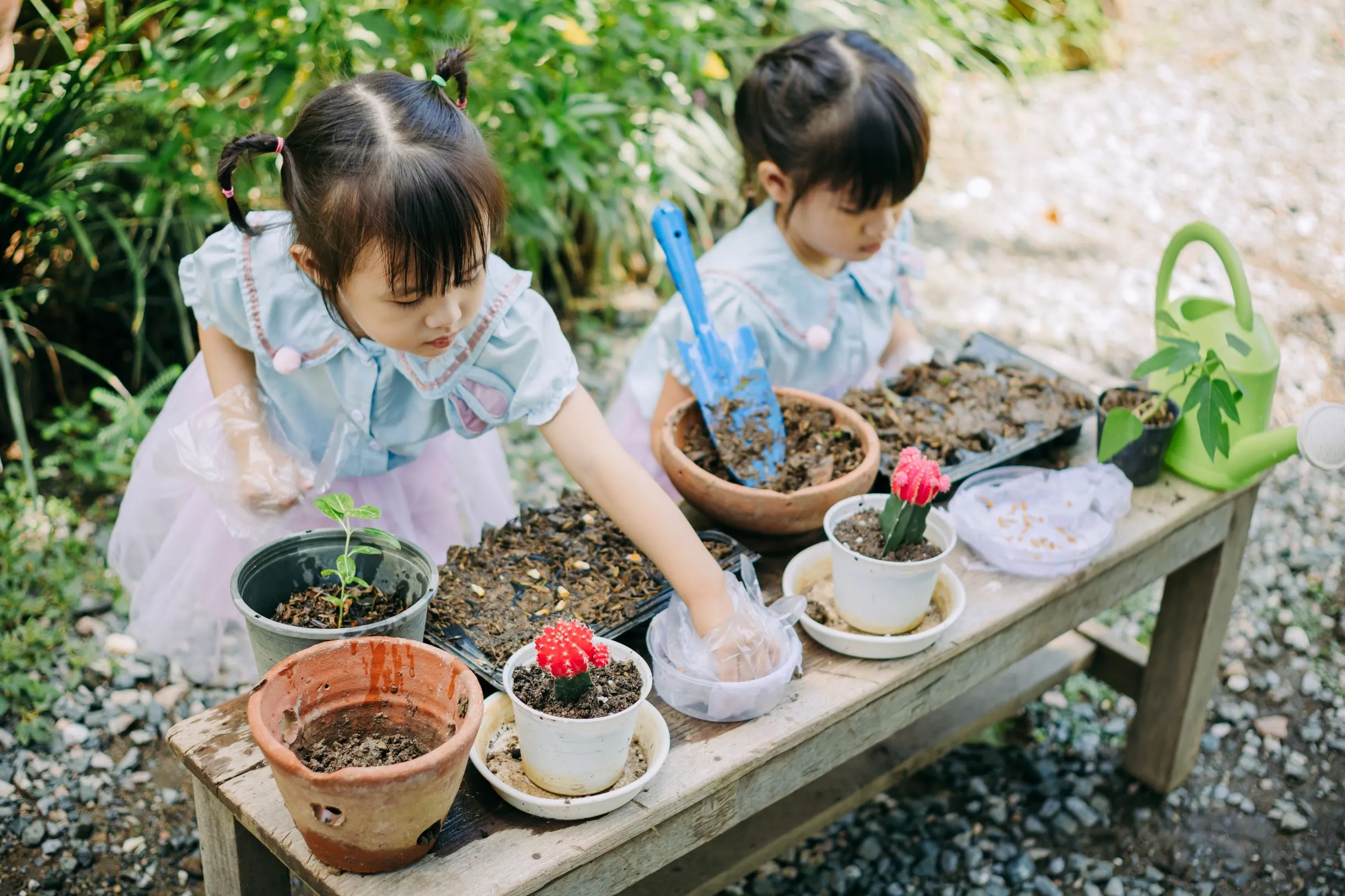Garden Zone 7B, also known as a cold-hardy zone, offers a moderate climate suitable for a variety of plants, including vegetables, fruits, and ornamentals. With average winter temperatures ranging between 5 to 10 degrees Fahrenheit, this zone allows for a diverse selection of flora to flourish.
Understanding the characteristics of Garden Zone 7B can help gardeners make informed decisions on plant selection and cultivation practices to create a thriving and beautiful garden landscape. By considering the unique climate conditions of this zone, gardeners can enhance their gardening experience and achieve successful plant growth outcomes.
Exploring Garden Zone 7b
Climate And Characteristics
The Garden Zone 7B encompasses areas with specific climate and characteristics that shape the types of plants suitable for growth.
Planting Opportunities
In Garden Zone 7B, you will find a variety of exciting planting opportunities for different types of flora and fauna.

Credit: www.brookings.edu
Choosing The Right Plants
In Garden Zone 7B, selecting perennials and annuals is crucial for a thriving garden.
Perennials like lilies, daffodils, and hydrangeas are ideal for Zone 7B.
Consider annuals such as zinnias, marigolds, and cosmos for a pop of color.
When choosing trees and shrubs for Zone 7B, opt for Japanese maples, dogwoods, azaleas.
These plants thrive in the moderate climate of Zone 7B.
Gardening Tips For Success
Gardening in Garden Zone 7B can be both rewarding and challenging. With the right garden tips, you can ensure a successful garden that thrives in this specific zone. Here are some essential tips for gardening success in Zone 7B.
Soil Preparation
Preparing the soil is crucial for the success of your garden in Zone 7B. The soil in this zone typically needs to be well-draining and rich in organic matter. Before planting, ensure to amend the soil with compost or well-rotted manure to improve its texture and fertility.
Watering And Maintenance
When it comes to watering and maintenance in Zone 7B, it's essential to be mindful of the water requirements of the plants. Be sure to water deeply but infrequently to encourage deep root growth. In addition, regular pruning, weeding, and mulching are vital to maintain the garden’s health throughout the growing season.

Credit: www.facebook.com
Dealing With Challenges
As a gardener in Zone 7B, you may face various challenges that come with this particular gardening zone. From frost and cold protection to pest and disease management, being prepared to tackle these challenges is essential for a successful garden.
Frost And Cold Protection
Frost and cold temperatures can pose a risk to your plants in Zone 7B. To protect them, here are some measures you can take:
- Cover plants with frost blankets or old bedsheets to provide insulation.
- Move potted plants indoors or to a sheltered area to safeguard them from extreme cold.
- Apply a layer of mulch around the base of plants to help retain soil warmth.
- Water your plants adequately, as moist soil holds heat better than dry soil.
- Consider using cold frames or hoop houses to create a microclimate for your plants.
Pest And Disease Management
In Zone 7B, pests and diseases can pose a significant threat to your garden. Stay vigilant and follow these tips:
- Identification: Learn to identify common pests and diseases that may affect your plants.
- Prevention: Practice proper plant spacing, crop rotation, and good sanitation to reduce the risk of infestation and disease.
- Natural Remedies: Utilize natural pest-control methods such as companion planting, insect-repelling plants, and organic sprays.
- Early Detection: Regularly inspect your plants to catch any signs of pests or diseases early on.
- Treatment: If an infestation or disease does occur, promptly treat affected plants using appropriate pesticides or disease-control methods.
By being proactive and taking the necessary precautions, you can overcome the challenges that come with gardening in Zone 7B. Whether it's protecting your plants from frost or managing pests and diseases, your garden can thrive with proper care and attention.
Connecting With Local Gardeners
Community Events
One of the best ways to connect with local gardeners in Garden Zone 7B is by participating in community events. These events provide an opportunity for like-minded individuals to come together, share their knowledge, and exchange gardening tips and tricks. Whether it's a neighborhood seed swap, a garden tour, or a plant sale, these events offer a chance to meet fellow garden enthusiasts who are passionate about creating beautiful and thriving gardens in the region.
Online Resources
Another great way to connect with local gardeners is through online resources. The internet has become a treasure trove of information for gardeners, and there are several online platforms dedicated to gardening in Zone 7B. These platforms not only provide valuable information and resources specific to the region but also offer opportunities for gardeners to interact and connect with each other virtually. Whether it's joining an online gardening forum, following local gardening blogs, or participating in social media groups, these online resources allow gardeners in Zone 7B to share their experiences, ask questions, and learn from one another.

Credit: www.wilsonbrosgardens.com
Frequently Asked Questions Of What Is Garden Zone 7b
What Is Garden Zone 7b?
Garden Zone 7B refers to a specific climate zone classification for gardening purposes. It indicates that the area falls within the range of average minimum winter temperatures of 5-10 degrees Fahrenheit (-12 to -14 degrees Celsius). Understanding your garden zone helps you choose suitable plants that can thrive in your specific climate conditions.
How Do I Determine My Garden Zone?
To determine your garden zone, you can use the USDA Plant Hardiness Zone Map. This map divides the United States into different climate zones based on average annual minimum temperatures. You can find your zone by entering your zip code on the USDA website or referring to the zone map available online.
Knowing your garden zone will assist you in selecting plants that are suitable for your area's climate conditions.
What Kind Of Plants Thrive In Garden Zone 7b?
Garden Zone 7B offers a wide variety of plants that can thrive in its climate. Some popular choices include perennial flowers like coneflowers, daylilies, and iris. Vegetables like tomatoes, peppers, and beans also do well in this zone. Additionally, trees and shrubs such as dogwoods, azaleas, and Japanese maples flourish in Garden Zone 7B.
It is always recommended to consider the specific conditions of your garden before selecting plants.
Can I Grow Tropical Plants In Garden Zone 7b?
While Garden Zone 7B experiences colder winters, it is still possible to grow some tropical plants using certain techniques. One option is to grow tropical plants in pots and bring them indoors during the winter months. Another method is to create microclimates in your garden by using protective covers like frost blankets or building structures that provide extra warmth.
However, it's important to research and choose tropical plants that are more tolerant of colder temperatures.
Conclusion
Understanding Garden Zone 7B is crucial for successful gardening. By recognizing the specific weather conditions and plant hardiness in this zone, gardeners can make informed choices about the plants they grow. With this knowledge, they can create thriving and sustainable gardens that flourish in their unique climate.

0 Comment to "What is Garden Zone 7B: Unleash Your Gardening Potential"
Post a Comment